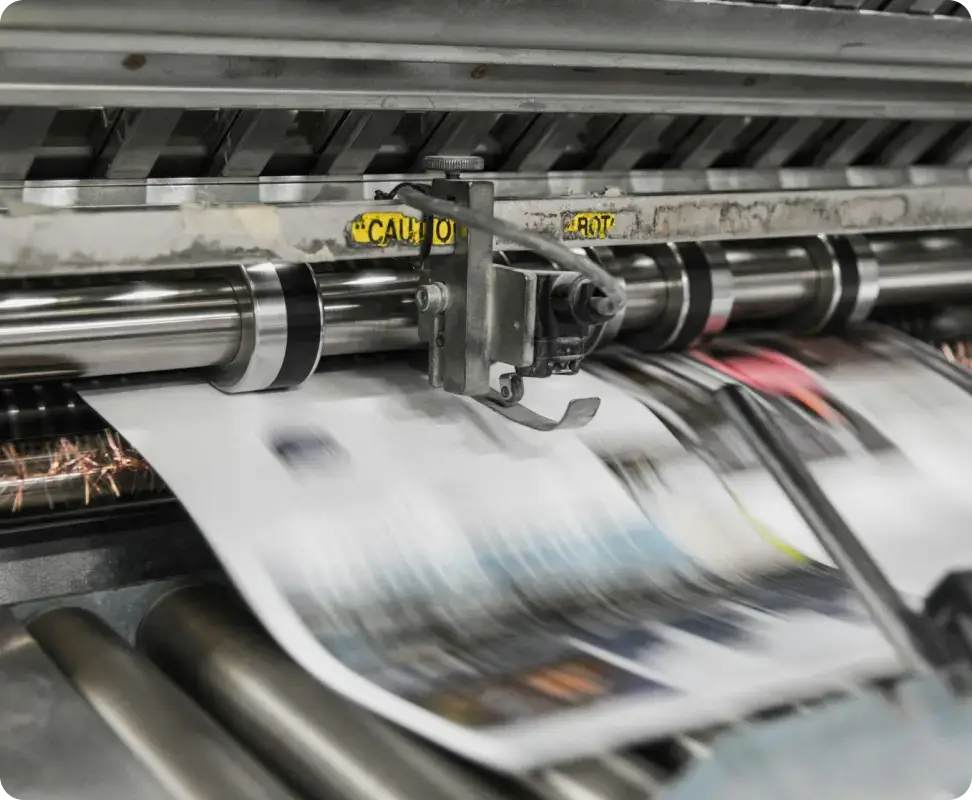Case study
Enabling Remote Printing for ZPL Printers
Stack
DURATION
TEAM SIZE

Our Client:
Our client, a leading manufacturer, sought to streamline their printing processes by enabling remote printing for Zebra Programming Language (ZPL) printers. These printers, located on the local network, lacked a native network protocol to integrate with their Enterprise Resource Planning (ERP) system, Microsoft Business Central.
The goal of the project:
The primary objective of the project was to develop a service that could facilitate sending commands to ZPL printers remotely. The client aimed to enhance operational efficiency by centralizing printer management and enabling seamless integration with their ERP system.

Advantages:
- Centralized Printer Management: The developed service acted as a hub, allowing the client to manage ZPL printers remotely from a centralized interface.
- Streamlined Operations: By enabling remote printing, the client reduced manual intervention and improved printing efficiency across their organization.

Technical Solutions & Stack:
The solution was devised using a microservice architecture, leveraging different components for local and cloud-based functionalities:
- Local Service: Developed as a Windows service, this microservice managed printers installed on local computers. It served as the central hub for receiving print commands and executing them on ZPL printers.
- Cloud Service: Another microservice hosted in the cloud acted as a communicator between Microsoft Business Central and the local service. It facilitated seamless communication and data exchange between the ERP system and the local printers.
Technology Stack:
The solution was built using .NET framework for backend development, WebSocket protocol for real-time communication, Azure Table Storage for data persistence, and Windows Service for local printer management.

Results:
- Enhanced Printing Efficiency: The implementation of remote printing capabilities enabled the client to streamline their printing processes, reducing manual errors and increasing operational efficiency.
- Improved Accessibility: With centralized printer management, the client gained the flexibility to control printing tasks from any location, leading to improved accessibility and convenience.

Michael Babylon
German Representative
Let's talk!
Latest News
In today’s super-connected world, keeping your business safe online isn’t just an IT thing anymore – it’s a top priority for your whole company.
This guide is your friendly map to understanding what makes San Francisco such a unique tech playground. We’ll also highlight some of the key players who are literally shaping the future of technology.
Imagine having a colleague who never tires, constantly picks up new skills, and molds themselves to fit exactly your needs. That’s the exciting potential of AI agents.
Learn how custom software development boosts efficiency, reduces costs, and maximizes ROI. Discover its long-term benefits for business success.
At Insoftex, we’ve seen firsthand how a well-crafted app can completely transform a business. Let’s talk about how you can make that happen for yourself.
We at Insoftex help you build these awesome teams, so you can focus on making your business shine, without getting bogged down in the nitty-gritty of team building.
The world of eCommerce is in constant flux, with businesses perpetually seeking innovative solutions to gain a competitive edge.
The blockchain world is exploding with possibilities, and at the heart of it all are smart contracts – these incredible self-executing agreements.
The agricultural industry is transforming digitally, and agritech solutions are changing significantly.
The agriculture industry is experiencing a revolution in today’s digital transformation era. Advanced software solutions reshape traditional farming methods, drive efficiency, and allow sustainable practices.
Explore the latest fintech payments solutions—platforms, gateways, and services—driving faster, more secure, global digital transactions.
Explore the latest fintech payments solutions—platforms, gateways, and services—driving faster, more secure, global digital transactions.















